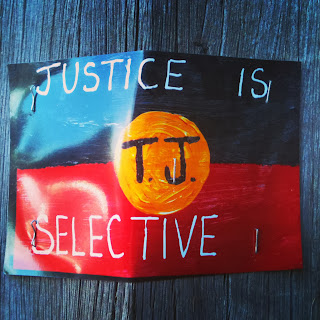Listening appreciation
5 musical concepts
·
duration
·
pitch – high/middle/low sound,
ascending/descending, leaping/stepping
·
structure
·
dynamics – volumes of sound,
loud/soft/getting louder/softer
·
tone colour - the sound source
(what instruments are being played and how are they being played?)
Carnival of the Animals – The Swan by
Camille Saint-Saens
Tone
Colour – the sound source (what instruments are
being played and how are they being played?) cello & piano
What do you think the two instruments
represent? Cello (the swan) piano (the water)
Describe how they are played – softly but
with a dignified strength (cello), the bowing movements are long to suggest
graceful movements
Dynamics
How would you describe the dynamics of the
piece? The piano is the accompaniment to the cello, which is leading the piece.
Generally speaking it was relatively soft, but there were gradations of
softness
F = forte (loud)
P = piano (soft)
PP = pianissimo (very soft)
MP = messo piano (medium soft)
Duration
Describe the tempo, rhythms – slow,
meandering
adagio (slow)
don’t confuse beat with rhythm – beat is
slow but there might be faster bits of rhythm inbetween
rhythm sits on top of the beat, rhythm wont
be slower than the beat
In the hall of the mountain king – Edvard
Grieg
How would you describe the change of each
of the five musical concepts throughout the piece?
·
Duration – 2 minutes, tempo
sped up (accelerando)
·
pitch
·
structure – 8 bars long
repeated, gradually gets faster
·
dynamics – starts off softly
ends up loud and more aggressive, started off more punchy (staccato) ended up
longer notes (
·
tone colour – started with a
horn instrument, progressed to other instruments leading wind instrument, ends
with lots of instruments playing together (the texture built up)
The Ice Dance – Edward Scissorhands by
Danny Elfman
Tone
colour
What is the first instrument heard in this
piece? Violin, harp, flute
What family of instruments enters next?
Wood (anything with a reed), percussion, strings
Why do you think the composer used a “music
box” as part of the instrumentation? Because it’s emotive, nostalgic makes us
think of childhood and memory
What voice range can be heard in the choir?
Soprano (high), tenor (mid), bass
(low)
Dynamics/expressive
qualities
What words would you use to describe this
piece? Emotive, nostalgic, enchanting, sentimental, hopeful, victorious
What images do you think of when hearing
this piece? 2 people dancing, fairytale, transformation
Describe the dynamic changes in this piece
Diminuendo (diminishing), crescendo (builds
up), both
Harry Potter – Hedwig’s theme by John
Williams
What is the name of the instrument that
plays the main theme the first time?
Celesta (mini piano), flute, violin
What family of instruments takes the theme
the second time? String, brass,
woodwind
How do the strings make the “sound” of the
wind?
Show youtube videos of certain instruments
being played to show the children what they sound like. Multiple choice
questions are good so kids can eliminate options if they aren’t sure.
Batman piece – ask about dynamics,
cresciendo
Mission impossible – how would you move to
this piece of music? Ask about duration, what is the rhythm (ostenato =
repeated pattern)
How can we relate music to other KLAs? -
Maths, science, hsie, religion, art, English
HSIE – stage 2 beliefs – how people’s
beliefs and religion relate to music, indigenous music and culture, sustainability
- building instruments out of recycled materials, civil rights movement in America
which musical genres came out of that struggle - write a rap about it, how
music can create a character – politician paint a softer picture with music in
ads
Music and English – meaning of lyrics,
rhyming words, use the stimulus of a book to create music, theme generates
music,
Music and maths – measurements etc..,
patterns, thickness of strings, how many bars etc, how many sections etc,
Music and art – painting what you are
listening to, words of a song translated to music and art “a girl is falling
through the air” represent it, use excerpt of a movie – remove the audio – have
kids create the music, look at certain artworks or art movements and think
about what music works
Music and P.E – invent musical games – 5
hoops cops & robbers move on the beat
Music and science – instruments to teach
the science of sound, transformation of energy – kinetic to sound – how does
sound get amplified, natural habitats introduction to, replicate how animals
make sounds etc
Connecting literacy and music using a
visual stimulus.
Two early learning principles
·
the early leaner is holistic
and sensory
new English syllabus – capabilities
Billy Goats Gruff – Susan Hellard
Look for events in the story and characters
in the story
Goats eating grass – scrunching paper,
Goats crossing – ‘trip, trap’ wooden percussion, troll getting tossed into the
river, cold
3 goats – change pitch, lower sound for
biggest goat, higher sound for smallest goat
troll different at the beginning and at the
end. Drum – low and loud at the beginning
audacity
– recording and editing program – free download!!
Finger stomp is another good program
Garage band
Percussive latin
My story
Wrightstuff music, midnight kids











